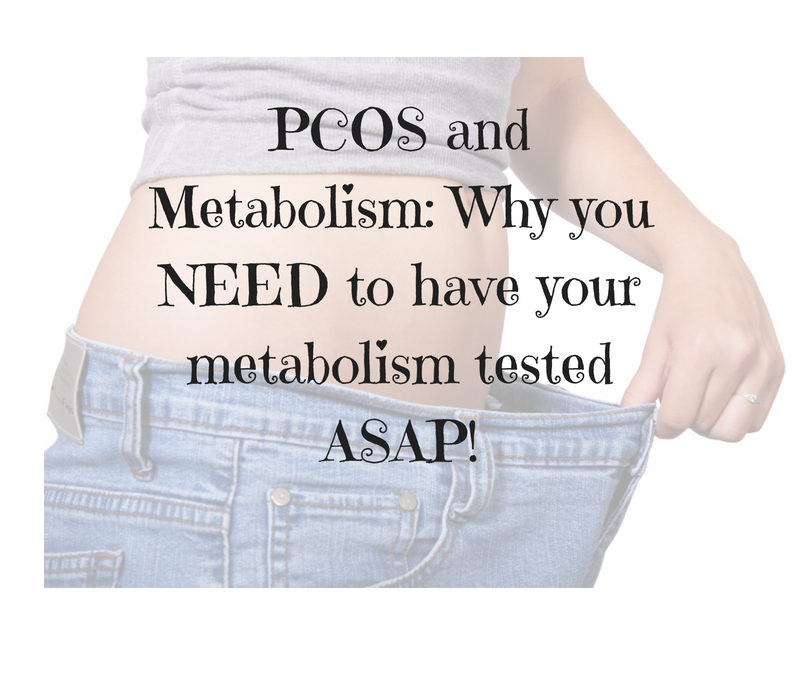
by AmyPlano | Jul 2, 2018 | General information about PCOS, PCOS and metabolism
Are you unable to lose weight in spite of vigorous exercise and a disciplined training schedule? Are you looking to maximize your performance yet feel like despite all your efforts you are failing miserably? Have you hit a plateau in your weight loss? Would you like to take the “guesswork” out of determining your calories to achieve your goals? Well if you answered “heck yes” to any of the above questions then you are likely the perfect candidate for RMR testing.
What is Metabolism
First things first, before we talk about RMR testing and why it is so friggin’ important we need to define metabolism. Did you know that even when you’re at rest, your body needs energy for its “silent” functions? These include breathing, circulating blood, adjusting hormone levels, and growing and repairing cells. The number of calories your body uses to carry out these basic functions is known as your basal metabolic rate (BMR) or more often referred to outside of a clinical setting as resting metabolic rate (RMR).
There are many factors which determine our metabolism. Some include:
Your body size and composition.
People who are larger or have more muscle burn more calories. Even at rest these folks tend to have higher RMR’s.
Your sex.
Men usually have less body fat and more muscle than do women of the same age and weight. This means men burn more calories at rest (Boo!). But don’t worry, I will be sharing some tips for how us chicks can optimize our metabolisms.
Your age.
As we get older (sigh), the amount of muscle we carry tends to decrease. Fat accounts for more of our weight, slowing down calorie burning.
[Truth bomb: If you consistently work out with weights you can help off-set some of this loss 🙂 ]
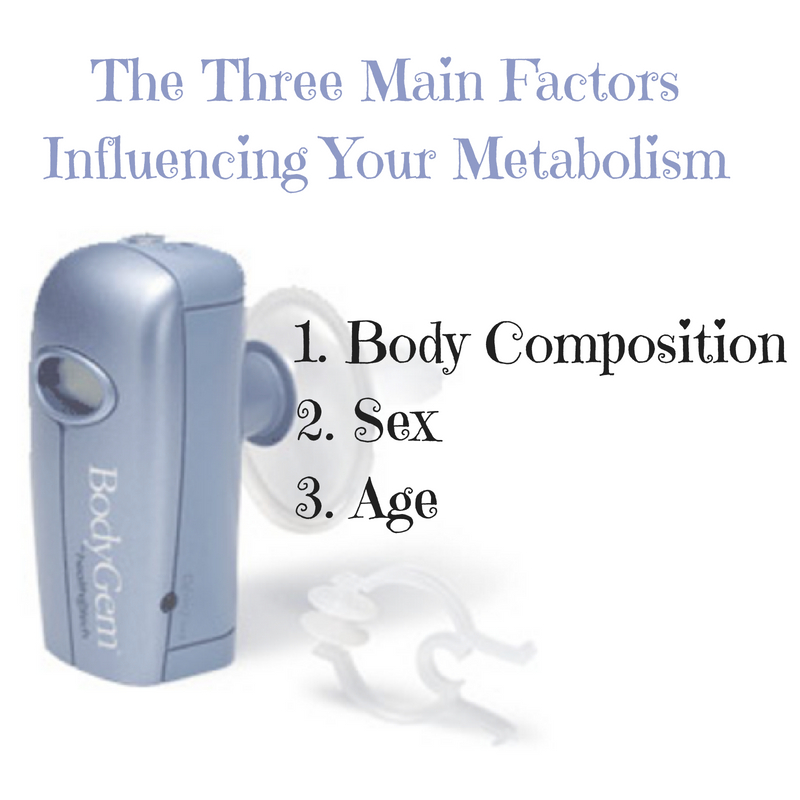
Two other important factors that determine how many calories your body burns each day:
Food processing (we call this thermogenesis!)
Did you know that digesting, absorbing, transporting and storing the food you consume also expends calories? Score! About 10 percent of the calories you burn each day come from the digestion and absorption of food and nutrients.
Physical activity
Physical activity and exercise accounts for the rest of the calories your body burns up each day. It comes as no surprise that physical activity is by far the most variable of all the factors.
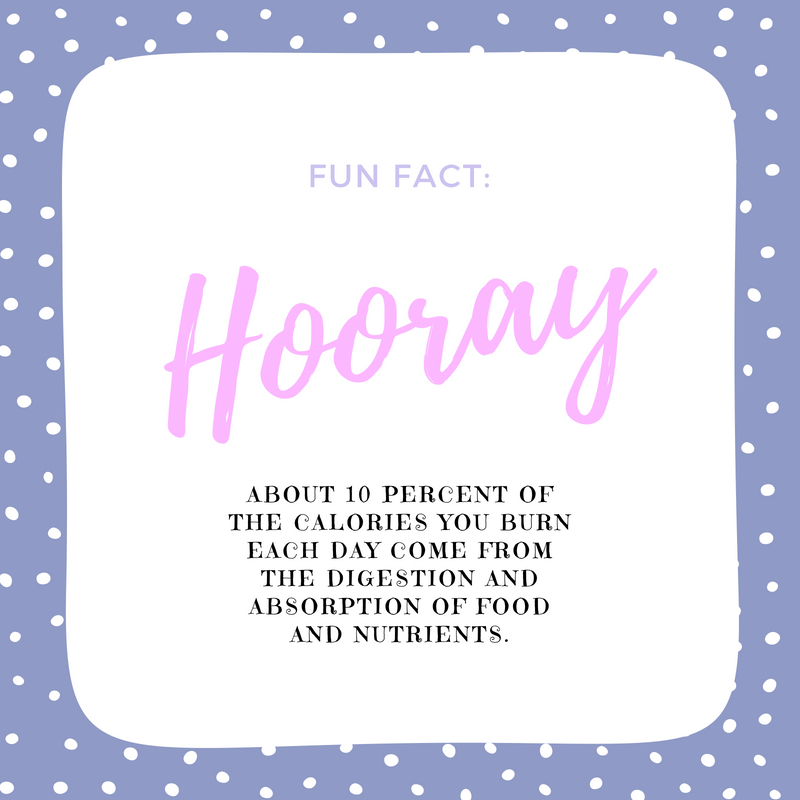
The changes in overall body mass (increase or decrease) ultimately comes down to long-term energy balance which is represented by energy in (via food) and energy out (via metabolic rate). Total energy expenditure is determined by many factors including: body composition, sex, age, thermogenesis and physical activity. Having ‘good’ genetics certainly doesn’t hurt either! So now that you are a master of ‘all terms metabolism’ let’s get down to business.
Here are my top three reasons for why getting your RMR tested is SO important to achieving your body composition and training related goals
1. Takes the guesswork out.
By having your metabolism tested by a professional you never need to ask yourself the annoying questions, “How much or little should I be eating ?!?”
How many times have you entered your height and weight into an online metabolism calculator only to get some crazy number which you have no idea how to interpret?
I cannot tell you how many times patients come into my office following a calorie level that is completely wrong for the goals they are trying to accomplish. This frustrates the heck out of me. It’s not that they are unsuccessful for lack of trying. It’s simply because they have been provided with the wrong information.
By testing your RMR you will now know the exact number of calories your body needs to accomplish your dietary and fitness related goals. There is no more guessing or even second guessing where your calories need to be! Through the use cutting edge technology we can help you determine the exact amount of calories you need to reach your goals. Headache solved!
2. Gives you an accurate baseline.
If you don’t know your baseline calorie needs how do you know if what you are doing is ‘working’?
You have got big goals which I love and admire. However, how can you accomplish your long-term goals if you don’t know where your baseline needs currently are? Testing your metabolism before you make significant changes to your exercise and/or training routine can provide you with a solid foundation in which to make adaptations. Therefore, as things like your body composition, weight and/or performance markers change over time you can adjust your calories relative to your new goals.
Independent of what our specific goals are we all need a caloric starting point. If we don’t have a baseline and we start making changes to our diet how can we tell what specific calorie level is working? Simply put – we can’t.
Therefore, by testing your RMR before making any significant dietary and/ or training changes you are armed with an accurate, reliable calorie level to base your goals on.
3. It helps you when you are stumped.
Knowing your RMR gives you clarity in those moments when no matter how hard you try – you just cannot seem to tackle your dietary and/or fitness goals.
Knowing your your RMR can be critical when you are stumped. As mentioned previously many people base their goals around a calorie level that is not in tune with their goals. Along with the headache this creates can come a massive amount of frustration. Unfortunately, if you have been there you know exactly what I am talking about 🙁
Trying to gain lean muscle mass but struggling like crazy? It could be that your calories are too low. We all know that in order to build anything we need ‘extra’ resources, right? That extra might be money, resources or time. Same goes for putting on muscle. In this case, the extra needs to be in the form of calories. Therefore, for someone aiming to put on muscle they need to FIRST make sure they are taking in enough calories to do.

On the flip side, do you feel like you are at a weight loss plateau? Are you meticulously counting calories, carbs, protein and everything under the sun and still not losing weight? Is MyFitnessPal definitely not your pal? For most people the simple answer is their calories are not in tune with their weight loss goals. It could be that their calories are too low. Or it could mean that their calories are too high. How the heck will they know unless they actually test their metabolism?
Knowing your unique RMR for the different ‘seasons’ can help optimize your nutrition during both your off-season and peak training periods. During training, you need to make sure you are taking in enough calories to support not only your training but your ideal body composition for your sport. It’s no surprise when an athlete is not taking in enough calories how quickly they feel the side effects. Unintentional weight can lead to fatigue, burnout and injury. All of these can be factors can be minimized if not avoided entirely.
Case in point – I rest my case. Plain and simple – anyone with a performance or body composition related goal should have their metabolism tested. And truth be told I don’t know a whole lot of people who don’t share these goals (especially the later!) By testing your RMR you will no longer be ‘spinning your wheels.’ The precise tools you need to determine the exact calorie level to fit your specific goals is attainable. And just like Jim Rohn’s stated, “When you know what you want and you want it bad enough, you’ll find a way to get it.”


P.S. Did you know we are running a 40 % discount on RMR testing for the month of July? Use the coupon code thisis40 when scheduling your metabolism testing under the ‘appointments’ tab on our website www.amyplano.com
P.P.S. What are you waiting for? This fantastic deal will not be around forever. Cut through all the confusion and get the numbers you need.
P.P.P.S. Does any of this mumbo-jumbo about RMR testing resonate with YOU? If so, in what way? Share your thoughts in the comments below. We ♥ to hear your thoughts. Don’t be shy – we don’t bite.

by AmyPlano | Jul 2, 2018 | General information about PCOS, PCOS and metabolism, Uncategorized, Weight Loss
So it is true … this girl right here turns 40 years old on Friday, June 29th. And what better way to celebrate my 40th then with YOU my loyal readers. So how would you like to receive a present from me? How does a 40 % discount on a metabolism test to celebrate this fabulous occasion sound? I don’t know about you but it sounds pretty dang awesome to me.

Heading into the next decade can be a drag. So rather than have a pity party for myself I decided to give you a pretty sweet present to mark this milestone birthday – 40 % off metabolism testing for the whole month of July. Whoot! Whoot!

For the whole month of July redeem coupon code thisis40 when scheduling your metabolism test to receive 40 % off each individual test. The normal rate for a metabolism test is $150.00. Therefore, by redeeming the code thisis40 you save yourself 60 bucks! If that is not pretty sweet – then I don’t know what is.
Important note: In order to receive the most accurate reading on the metabolic test you should be fasted (no food), with no exercise or caffeine within 4 hours of your test time. You can drink plenty of water – just nothing with caffeine or calories.
Below are the steps to redeem your discounted metabolism test:
- Click HERE and you will be re-directed to the scheduling section of this website.
- Click the link for “Metabolism Testing” under appointments.
- When the prompts ask you “with” who you would like to schedule you can choose either myself or my fabulous RD Audrey. The discount applies to us BOTH.
- Select the time slot you would like to come in for your metabolism test.
- Next put in your name, phone number and email address.
- Within the information section where it says “Redeem Coupon” put in the discount code thisis40
- Follow the prompts for payment
- Once you have provided payment you will receive an email confirmation with the date and time of your visit.
- Arrive fasted, with no caffeine or exercise within 4 hours of your test.
Our office is located at 500 Boston Post Road, Orange, CT 06477. We are in the same plaza as Hawley Lane Shoes. When you pull into the plaza look for signs for The Plano Program.
Over the next month I will be releasing more information about why having your metabolism tested is SO friggin’ important – so stay tuned for blog updates.
Please fee free to share this birthday gift with anyone who you think might benefit – which I think is pretty much anyone with nutrition related goals. After all who does not want to know their metabolism? Said no one ever ?
Have you ever had your metabolism tested? Did you find it helpful in reaching your nutrition related goals. Please tell us your experience in the comments below.



by AmyPlano | Jul 17, 2017 | PCOS and carbohydrates, PCOS and Fats, PCOS Breakfast Foods
PCOS Friendly Bread – Yes It Does Exist
I know what you are thinking – the word PCOS and bread should not even be in the same sentence. But guess what? That is where you are wrong ‘cysta! I have been dying to share with one of my favorite PCOS friendly breads – Dave’s Killer Bread. Yup – I agree with you! Super, duper, cheesy name. But all situations aside I will let this goober get away with it as it just that good.
I feel like I must have read a review about the bread a while back. Shopping at Shop Rite in Milford, CT a couple of weeks ago – the bread seemed to jump out at me. The label is memorable for sure! Most breads don’t have a long-haired dude strumming a guitar on the front of the package. SO I guess I am not super surprised I was drawn to it. Are you? Of course – being the foodie that I am — I needed to try it. So, of course I bought all three different types that Shop Rite had.

Front of the label for Dave’s Killer Bread – go get yo’self some.
Dave’s Killer Bread Claim to Fame
Independent of its taste – which I will get to in a second — Dave’s Killer Bread has several great characteristics that make it one the few PCOS friendly breads I trust. Number one, the ingredients are all high quality. They only use USDA organic ingredients. They also claim all their ingredients are made from non-genetically modified seeds. It is important to note that the label claim “Non-GMO”claim is not yet supported by FDA. However, usually a third-party does come in verify the validity of this claim. So, you have to give Dave props for going through all that effort to do this.
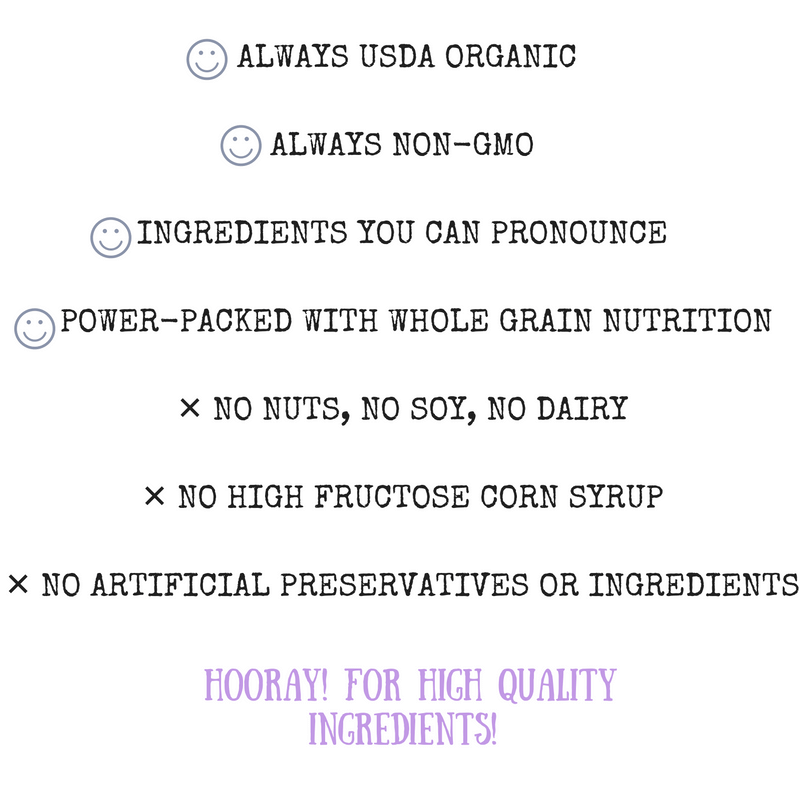
Only Ingredients You Can Pronounce
Next, I promise, you can pronounce all the ingredients. In addition to being able to pronounce them – you easily can find what they are. I reviewed all the varieties of Dave’s Killer Bread and there was not one single ingredient I had to question. Below you can see the ingredients I took directly off a loaf of Dave’s Killer Bread – 21 Whole Grains & Seeds. Remember when purchasing bread you always want the word “whole” to appear within the first 3 ingredients. This signifies the ingredients are in fact made from whole grains and not processed. As you can see – this bread fits that criteria.
The Macronutrient Breakdown is Solid
PCOS friendly breads are hard to come by – but Dave’s Killer Bread makes it both easy and tasty to accomplish this task. Dave’s Killer Breads sells several different variety. But one of the things I like is there is an entire line of thin-sliced breads that deliver the same killer taste and texture in a smaller, lighter package. One slice of the regular bread has about 120 calories, 22 grams of carbohydrates, 2 grams of fat and 5 grams of protein. While the thin-sliced variety only have 60-70 calories (depending on which one you choose), 12 grams of carbohydrates, 1 gram of fat and 3 grams of protein.
I know what you maybe thinking – how thin is thin? Not too thin – I promise. I often cringe when people tell me they eat “diet bread” (the first thing that comes to mind is Sara Lee – yuck!) that is paper-thin. Why even bother? Put that crap in the toaster for too long – and you have a three-alarm fire. That is not at all what I am talking about.
In all seriousness, I did not even consciously buy the thin-sliced bread. I just bought what they had which happened to be the thin-sliced variety. I did not even noticed it was thin-sliced until it was all gone and I needed to go to the store to buy more! It was only then that I noticed that Dave even made what they would consider a traditional, thicker slice. I bought that too and it was as good – but not drastically different from the thin-sliced variety. So there is no need to “upgrade” to the big girl slice — unless you want the extra calories and carbohydrates.
Did someone say fiber?
You know how much I love talking about the benefits of fiber for women with PCOS. If fact, I think my patients want to kill me sometimes when I hammer them about meeting their daily fiber targets. Which for most folks is a whopping 28 – 35 grams of fiber per day. The average women only consumes about 15 grams – 50 % less than what is required. And we wonder why we are hungry all the time!?! Not only does fiber help keep us full, it also helps control blood sugar by promoting the liver to release blood sugar more slowly. Given that women with PCOS are more likely than not to have issues with their regulation of blood sugar and insulin there is no reason they should not be meeting their fiber goals.
Dave’s Killer Bread helps us get one step further to meeting our fiber needs. Each slice of Dave’s Killer Thin-Sliced Bread has 3 grams. So if you make yourself a pretty little sandwich you have yourself 6 grams of fiber. While, that may not seem like a lot – once you start adding all sorts of good-looking veggies to your sandwich you are well on your way to meeting your daily fiber totals. Round out the meal with some guacamole or humus with raw veggies and well what can I say – you’ve got yourself a nice high fiber meal.
Baby Got Omega-3s
Does the word Omega-3s ring a bell? Remember a couple of weeks ago when we were chatting about all the amazing benefits of fats for women with PCOS? Well, if you missed it – or maybe just forgot click here to read more about PCOS friendly fats. Omega-3 Fatty Acids are a specific type of polyunsaturated fat that is essential to our body. This means our body cannot produce them – so we need to get them from the food we eat. Omega 3’s are most known for their role in reducing inflammation.Plus studies support that the right levels of Omega 3’s can reduce cholesterol, triglycerides and blood pressure, lowering your chance for heart attack, stroke or other cardiac event.
Dave’s Killer Bread is one of the few breads on the market to actually contain Omega 3’s that I know of. I imagine other exists – they have just yet to cross this girl’s path! Each slice of the thin-sliced variety has 130 mg per slice. While there is no finite recommendation for Omega 3 intake, it is fair to say that more is almost always better. While we would love to see people eating fatty fish that has Omega 3’s, I think it is fair to say this is not happening. So if someone can squeak in some Omega 3’s in – especially in an assuming source such as bread – I am all for it. Top your bread off with some grass-fed butter (Kerry Gold is my absolute favorite!) or organic nut butter and you just jacked up your Omega 3’s without batting an eye. Boom!
Dave’s Killer Bread Has a Killer Mission
I admit it – I am a sucker for a anyone or company who gives back. I don’t care what you are giving back – whether it be shoes, money, time, hugs or just smiles I think it is just great when people try to make some else’s life better. Companies like Toms Shoes, The Company Store and Good Spread have a place in my heart. Not to mention amazing people like Theresa on Pit Bulls and Paroles who rescues and finds homes for thousands of pit bulls each year. It is amazing how selfless companies and regular people alike can actually be. Especially in this day in age when everyone seems to be drinking their own flavor of hater-ade.
Well, the Dave’s Killer Bread company has an equally heart warming story. The company states that one in three of their employee partners has a criminal background.
“At Dave’s Killer Bread, we believe everyone is capable of greatness and that a second chance can lead to positive lasting change. In 2015 we introduced our non-profit, the Dave’s Killer Bread Foundation, with the mission to inspire other businesses to become Second Chance Employers and affect positive societal change. “
They even have a foundation for reducing the negative impact of mass incarceration and recidivism in America. Their foundation provides programs for businesses looking to adopt or improve these practices. I am mean honestly how cool is that?
Now the moment you have all been waiting for – how does Dave’s Killer Bread taste? I think it tastes pretty awesome! If I were to use one word to describe the bread it would be ‘hearty’ yet not overly heavy and dense. Despite being a whole grain, Dave’s Killer Bread still retains a good deal of lightness. I found it soft with a very light sweetness. Obviously, depending on the variety you buy you may have more or less seeds. I found it was good on a sandwich and just as good on its own with butter or peanut butter. I even made French toast with it which came out quite awesome if I have to say so myself!
But just a quick word of caution – do check the expiration dates. The first couple of loaves we bought were killer literally. But the second batch seemed a little dryer – if not slightly stale. A quick little pop in the toaster remedied that. However, I might pull from the back of the shelve as most stores likely do first in – first out placing the older ones in the front.
So that’s a wrap for this week’s blog. Have you tried Dave’s Killer Bread? Or do you have a PCOS Friendly Bread you recommend? Please let our PCOS community know in the comments below. We would love to hear from you!


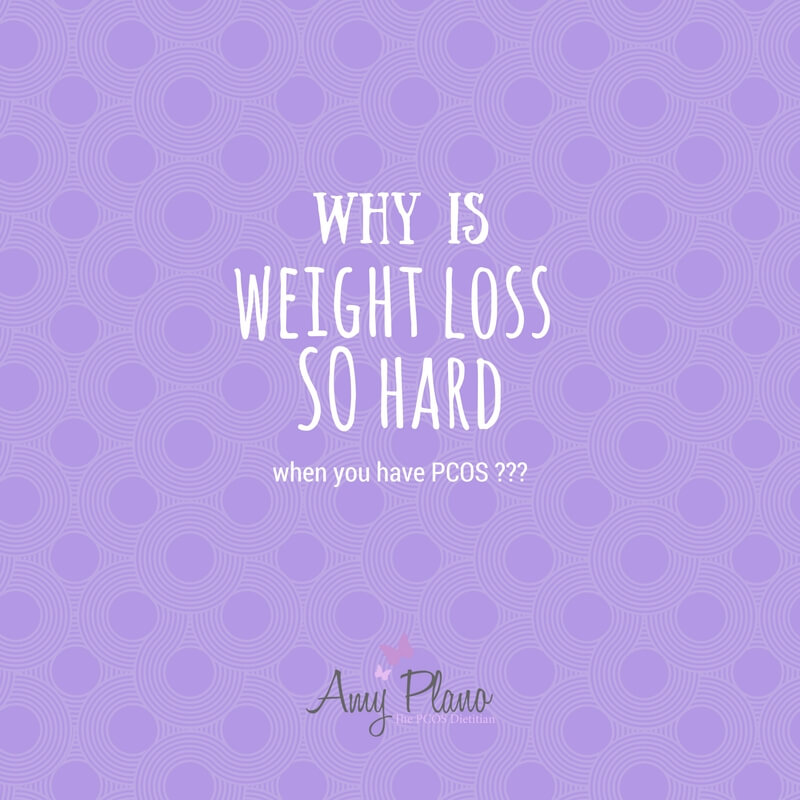
by AmyPlano | Sep 1, 2016 | PCOS and Weight Gain, PCOS Medications, Weight Loss
Why Is Weight Loss SO hard when you have PCOS?
Did you know that weight loss can help with improving almost all the symptoms of PCOS? Even a modest weight loss of 5 – 10 % of a woman’s initial weight can lead to improvements in insulin sensitivity, ovulation and fertility! But, I know this is easier said than done. Weight gain and weight loss are two of the most common issues women with PCOS are forced to deal with.
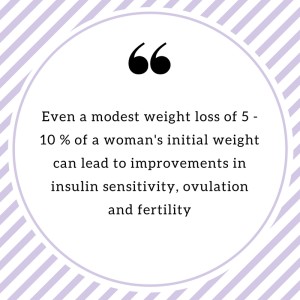
But, what gives ? Why is weight loss so hard if you have PCOS? Well my dietetic intern Jackie Budlowski and I are here to lay the smack down and give the 411 of why the heck it so friggin’ challenging to lose weight when you have PCOS. Get your notebook out — these are some golden nuggets of information 🙂
Insulin
I truly believe insulin is one of the most important hormones in controlling weight! Your pancreas secretes insulin to regulate your blood glucose levels. In most individuals, insulin helps lower one’s blood glucose levels by shuttling glucose into the cells where it can be used for energy. However, most women with PCOS do not effectively process glucose. They experience what is called insulin resistance.Their bodies are less sensitive to the effects of insulin. In response, the pancreas dumps out even more insulin, leading to high insulin levels, or what is known as hyperinsulinemia.
High levels of insulin signal to the body that energy is abundant. In turn, rather than use the extra energy as fuel, women with PCOS store excess glucose as fat. Therefore, one of the biggest keys to controlling weight is to regulate blood sugar and control insulin levels. This is best accomplished through a moderate carbohydrate diet supplemented with the insulin sensitizing agent metformin.
If you are not already familiar with the benefits of metformin please read my previous blog post which will bring you up to speed.
Slow Metabolism
Women with PCOS have been shown to have a slower metabolic rate. This is based on many factors but the primary one being the amount of body fat women with PCOS tend to carry. Your metabolic rate is the number of calories you need for your body and organs to work. You see, body fat is what I consider metabolically “dead.” It does nothing for you but kind of just hang there.
Muscle on the other hand is very thermogenic. It burns more calories than fat does – even while at rest. In fact, muscle tissue is about 8 times more metabolically demanding than fat. A higher percentage of lean body weight (muscles) results in a higher metabolism compared to people of the same weight with a lower percentage.
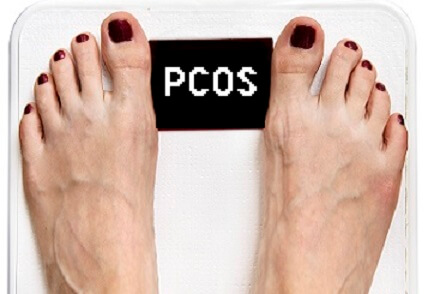
If you have a slower metabolic rate, this means you must consume fewer calories than the average woman. Eating more calories than you burn can lead to weight gain. In future blog posts we will discuss some of the different ways to improve your metabolic rate (Hint – Hint : strength training is definitely one of them!)
If you are curious what your metabolic rate is and you live in the Connecticut area shoot us an email at amy.plano@yahoo.com. We can set up a time to test your metabolism. We have a device called the Bodygem which tests your metabolism by using a simple breathing device. The Bodygem is the “gold standard” of metabolism testing devices. Don’t believe us ? Click here bodygem validation to review the research. The cost of the test is $150.00. You must be fasted, with no caffeine or exercise for 4 hours before the test.
Appetite Hormones
There are a number of hormones involved with hunger and appetite control. Ones of particular interest for women with PCOS are leptin, cholecystokinin (CCK) and insulin. These hormones are responsible for signaling to the body to tell it that is it full and to “stop eating.” Research has shown that women with PCOS have altered hormone signals, which may lead you to feel constantly hungry even when you are consuming enough calories. This leads to overeating, increases in body fat and overall lower esteem. Not a winning combination for weight loss.
Leptin
Did you know that your fat cells produce hormones? This is one reason women who carry a significant amount of body fat often have hormonal problems. One of the hormones produced by your fat cells is leptin. This hormone sends a signal to the hypothalamus gland in your brain when fat cells are full. Due to the fact that cells produce leptin in proportion to their size, overweight women with PCOS also have very high levels of leptin.
Given the way leptin is supposed to work, women who are overweight and have PCOS should have a diminished appetite. But we know this is not the case. You can have a lot of fat making a lot of leptin, but it doesn’t turn the hunger valve off. The brain isn’t listening. No drop in appetite. In fact, your brain might even think you’re starving. This because as far as it’s concerned, there’s not enough leptin! So you get even hungrier. This condition is known as leptin resistance. This causes an up regulation of appetite. This supports why women with PCOS tend to constantly be hungry despite taking in an ideal amount of calories.
Cholecystokinin (Alias: CCK)
Therefore, it may come at no surprise that women with PCOS often feel less satisfied after a meal than women without PCOS. This can be attributed to the hormone cholecystokinin (CCK). CCK is responsible for telling your body you are full after a meal. Women with PCOS are reported to secrete less CCK in response to a meal. So, if your CCK levels are lower, this means you will be hungrier after meals despite just eating. It has also been speculated that impaired CCK secretion may play a role in the greater frequency of binge eating in women with PCOS.
Not so awesome, right ? But the plot thickens …
Insulin
Lastly, insulin also acts as an appetite stimulating hormone. You may already be familiar with the concept of insulin resistance and PCOS. If you are not click here to brush up on your knowledInsulin resistance occurs when there is a lot of insulin being produced (such as, with many women who have PCOS), but the body and brain have stopped “listening” to insulin’s effects. The scenario becomes : you eat, your body releases insulin, but your body still tells you to eat more. So you eat more and increase the likelihood of storing the food you do eat as excess body fat. And if this is not bad enough – you rarely feel satisfied.Therefore, high levels of insulin may be one of the many reasons why you may experience more hunger than other people. Higher hunger levels inevitably leads to more eating which results in weight gain.
Just because it is harder to lose weight, doesn’t mean it is impossible. Here are some tips on how to take the bull-by-the-horns and make your hunger hormones work for you!
Weight loss & PCOS: How to manipulate your hunger hormones for weight loss
Pump up the protein
Do your best to have protein at all meals, but especially at breakfast. Breakfast sets the “appetite tone” for the day! Therefore, consuming high-quality protein sources such as eggs, Greek yogurt or cottage cheese with some nuts will help reduce your hunger hormones and keep your appetite at an even keel throughout the day.
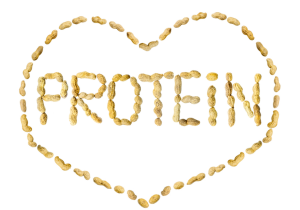
Skip the processed carbs (duh!)
Stay away from refined-carbohydrate-only meals and snacks such as cereal, a bowl of pasta, crackers, chips and starchy snacks. Even having a healthy snack such as fruit alone can trigger a spike and an immediate drop in insulin, so add some nuts, a piece of cheese or Greek yogurt to your fruit.
Focus on high fiber foods
Fiber is deeply tied to satiety. High volume, low-calorie, nutrient dense foods delay gastric emptying keeping food in the stomach for a longer period. Therefore, do your best to include foods such a vegetables, high fiber cereals, fruit and legumes to keep hunger at bay. The goal is aim for 25-30 grams of fiber spread throughout the day.
Eat a diet rich in omega-3 fatty acids to boost leptin
People who are overweight tend to release too much of a group of molecules that the body uses to combat inflammation. These molecules reduce leptin’s ability to communicate with the brain. They are thought to be one of the underlying causes of leptin resistance. Omega-3 fatty acids decrease the production of these molecules by reducing inflammation in the body. The body does not produce omega-3 fatty acid therefore you must get from the diet.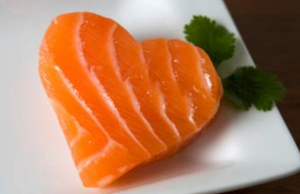 Foods high in omega-3 fatty acids include grass-fed meats, walnuts the fattier fish salmon, anchovies, sardines, mackerel, trout as well as chia seeds, flax seeds, summer squash and kale. Aim for about 800 – 1000 mg per day.
Foods high in omega-3 fatty acids include grass-fed meats, walnuts the fattier fish salmon, anchovies, sardines, mackerel, trout as well as chia seeds, flax seeds, summer squash and kale. Aim for about 800 – 1000 mg per day.
While the hormones that effect and control your hunger might be seen as complex, the three I’ve just discussed are keys to to unravelling this complicated web of PCOS, hunger and weight gain. As you can see, there are many factors at play, beyond just your determination to eat properly. These are factors I want you think about when you become frustrated with your PCOS and weight gain.What is important to understand is that your behavior around eating is not always something you can always consciously regulate.
Be confident and believe in yourself. Weight loss may initially be a struggle, but with the proper approach I am confident you can do it!


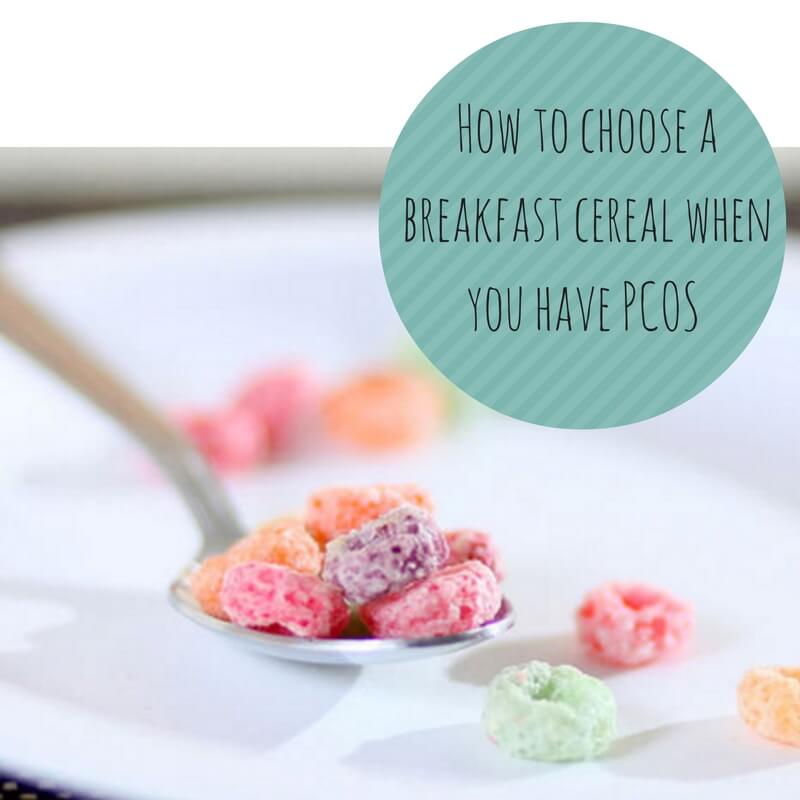
by AmyPlano | Aug 21, 2016 | PCOS Breakfast Foods
PCOS friendly cereals – Do they even exist?
So as a Powerful Chick with Outrageous Spirit I know what you are thinking.

PCOS friendly cereals do in fat exist. However, while I am certainly not advocating cereals along the like of Lucky Charms and Golden Grahams every day (although those do happen to be some of my favorites!) I do think there can be a place in the diet of the PCOSers for cereal. It is just as important to know which cereals to choose. Time to put our label reading glasses on and get to work.
Don’t Be Fooled
Information on the front of the box can be misleading. A lot of PCOSers look for products that state “low in sugar,” in an effort to watch their carbohydrates. Unfortunately, a cereal claiming to be “low in sugar” might not be as equally as awesome in terms of fat, whole grains, or sodium. Therefore, it important to read both the nutrition information panel as well as the ingredients to make the most educated decisions when it comes to PCOS friendly cereals.
Wholly grains
I say it a lot, and I’ll continue to do so: Whole grains and foods that contain whole grains provide a heck of a lot health benefits (especially for women with PCOS!). Whole grains contain all three parts of the grain along with fiber and many other nutrients such as B vitamins, vitamin E and magnesium.
Check the ingredient list on the cereal box. The first item listed should be a whole grain. Examples include but are not limited to whole wheat, whole-grain corn, barley, oats, oatmeal, millet, quinoa and wheat berries.
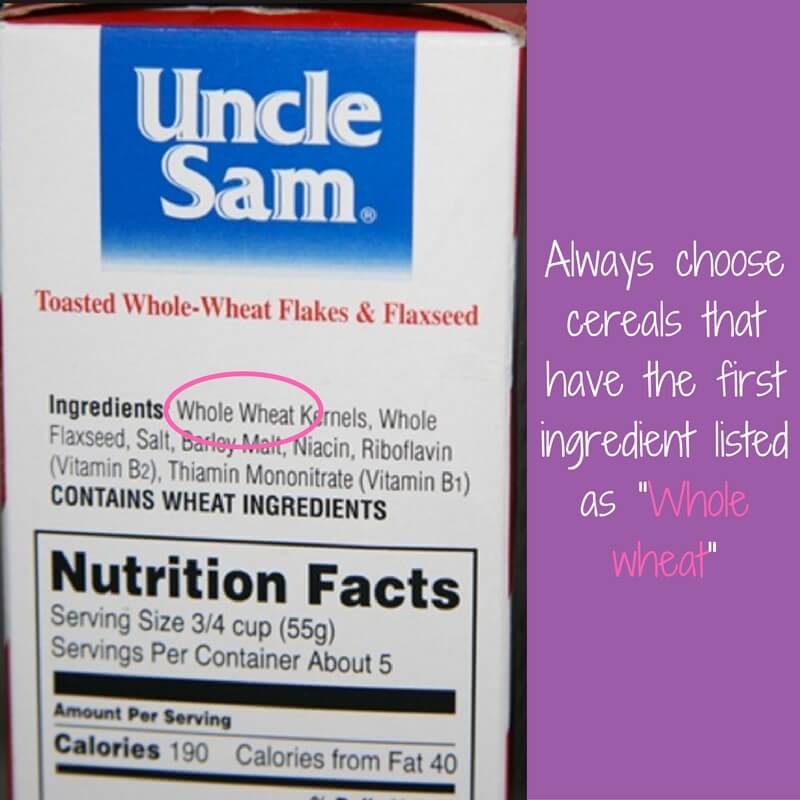
The words “multigrain,” “wheat,” “wheat germ,” and “bran” are not necessarily indicators of a whole grain. These terms may simply mean part of the grain is missing. Or in some cases the ingredient multigrain may imply many grains none of which are whole. Sneaky!
Fill up on Fiber
The health benefits of fiber and PCOS are endless. Research supports that diets that are high in fiber help lower blood sugar, assist with weight loss, lower cholesterol and help us poop. For women with PCOS, I would love for you get at least 30 grams of fiber per day. In an effort to meet these goals try to aim for cereal with at least 3 grams of fiber per serving.
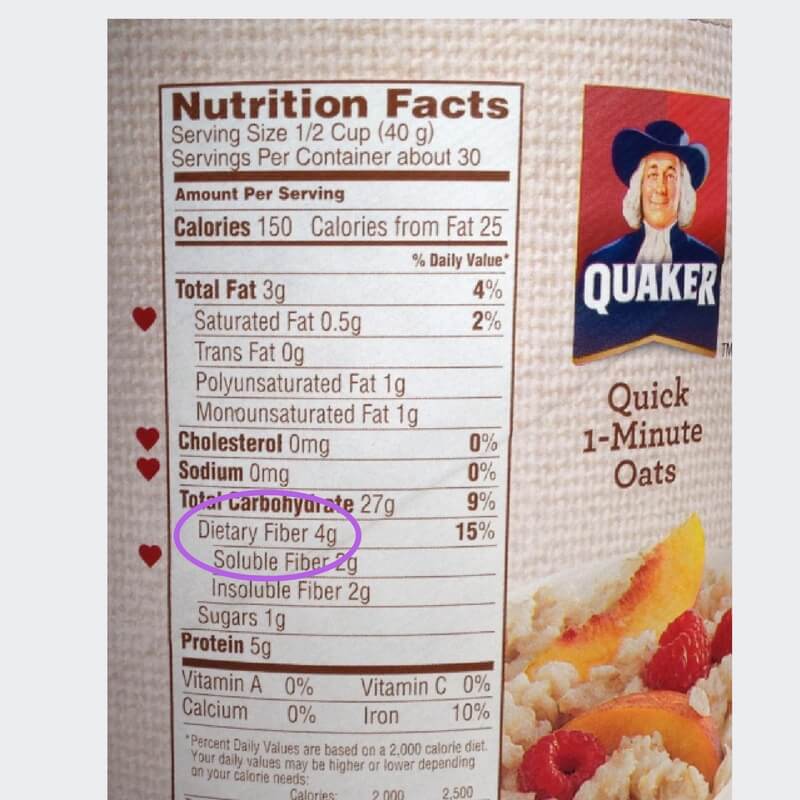
As you can see here, quick 1-minute oats have a whopping 4 grams of fiber. This is an excellent example of a high fiber cereal.
Limit the unhealthy fats
Saturated and trans fats are the bad guys. Fortunately for us, most PCOS friendly cereals are low in saturated fat and most have no trans fat. But if you’re a granola groupie, look out, as many granolas may contain saturated fat and contain more total fat than a bowl of French fries! And you thought all granolas were healthy…sadly not.
Look for cereals with zero grams of saturated fat and choose those with fewer than 4 grams total fat per serving.
Steer clear of high-sugar cereals they are of no benefit for women with PCOS
As a PCOSer sugar is the first thing that often comes to mind when you hear the word cereal. Given the high sugar content of many cereals you are often better off eating a bowl of crumbled up cookies and milk for breakfast. A good rule of thumb is to stick with cereals that have no more than 8–10 grams of sugar per serving. That’s roughly two teaspoons of sugar. Less is even better!

Note – In effort to optimize blood glucose control, remember to also look at the total carbohydrate grams (after checking out the serving size, of course), not just the grams of sugar. Try to aim for less than 35 grams of total carbohydrates per serving. But as a matter of principle, it pays to check out the grams of sugar on cereal labels.
Women with PCOS should seek out cereals that contain a modest amount of protein
Protein, as well as fat, plays a key role in extinguishing hunger. Ingesting protein provides staying power, so it may help you control the munchies. Look for PCOS friendly cereals with 3 or more grams of protein per serving. You’ll also get protein from the milk you add to your cereal. By adding 1 cup of 1 % milk to your cereal you are adding 8 grams of protein to your meal. For even more protein stir your cereal into some plain greek yogurt for an extra 12-18 grams of protein. Boom!
Shy away from sodium
Cereal is probably not the first food to come to mind when you think about high sodium foods. But surprisingly, some cereals contain some hidden sources. For example, one half-cup of Post Grape-Nuts contains 290 milligrams of sodium. General Mills Wheat Chex contains 270 milligrams per 3/4 cup serving. Stick with PCOS friendly cereals that contain less than 200 milligrams per serving.
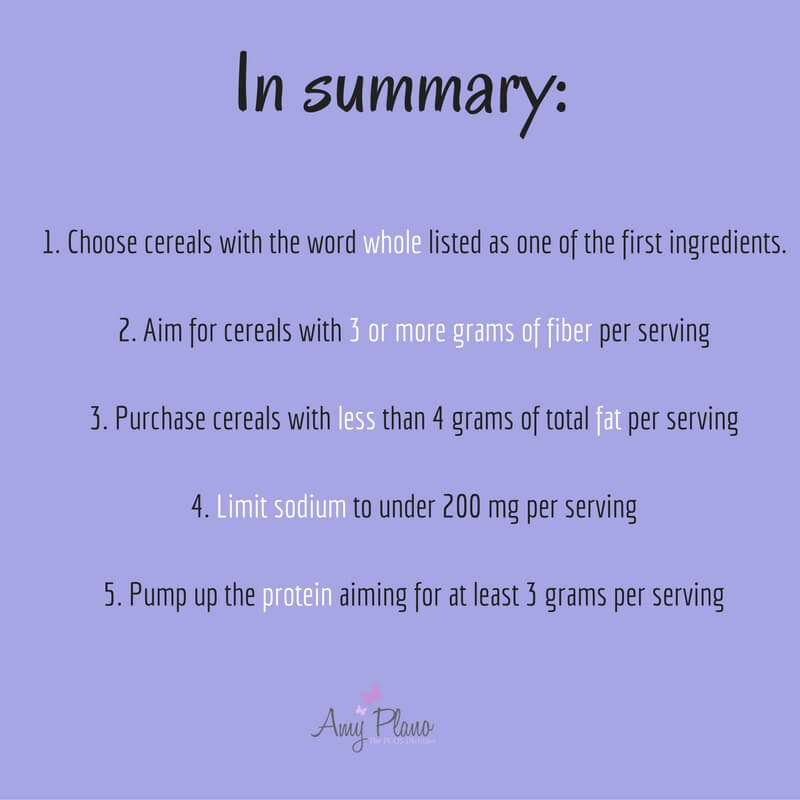
There is no denying it that you PCOSers love your cereal ♥ But by following the above guidelines you can steer away from cereals that damper your metabolism and choose those with some nutritional merit. As a rule of thumb I would recommend that women with PCOS consume cereal no more 1-2 times per week. While it certainly does have some nutritional value, there are other more quality breakfast foods I would love you to choose.

























